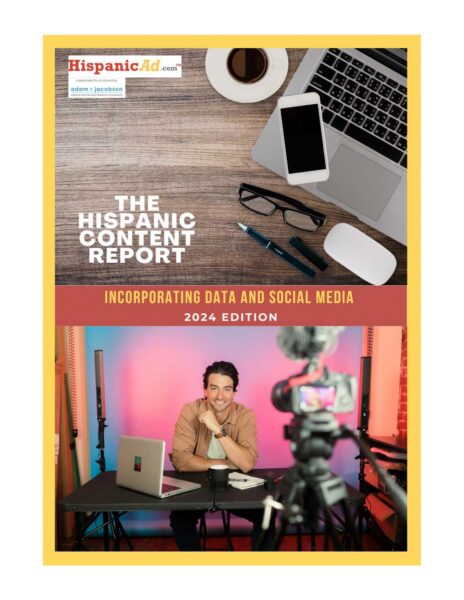Hispanic Perceptions of Food and Meals.
September 27, 2005
Today’s consumers are driven by convenience when purchasing food items. The marketplace is overflowing with prepared foods, frozen vegetables, single serving, microwaveable items and other convenience food products. In a world where many people eat alone and don’t have the time or desire to cook, these products are helpful time-savers. However, there is at least one segment of the market that goes against the grain in the food industry in this respect: the Hispanic market, especially recent immigrants. Hispanics place great importance on fresh, quality food made from scratch. Additionally, a meal in the Hispanic culture is an occasion when the family spends time together.
A meal is a time for the family to talk about the day and make important family decisions. This is much more common in Hispanic households than in other households. The Hispanic family unit spends substantial amounts of time shopping, playing and eating together as well as with friends (Korzenny and Korzenny, 187).
If you looked in a typical Hispanic family’s kitchen, you would find less packaged food and more fresh produce than in the average non-Hispanic household. In fact, a recent Kraft survey reveals that Hispanic families are less likely to have items such as peanut butter and cooking spray (Berk), typically found in other households for their long shelf life and common use. Part of the “culture of the meal” for Hispanics includes using fresh food as opposed to frozen or prepared foods. This is especially true for produce, meat and fish (Howell). The desire for fresh food can be seen in the number of shopping trips that Hispanics make for groceries every week. As seen in the table below, Hispanics make 4.7 shopping trips a week, more than twice as many trips as the average U.S. consumer.
Adapted from “The whole empanada”
Fresh food is about more than just the food, however. Purchasing fresh and authentic products is one way that a mother can show love to her family. One of the Hispanic mother’s main responsibilities is the health and well-being of her children. This includes making sure that they eat “healthy and tasty foods” (Korzenny and Korzenny, 187). The mother finds fulfillment in feeding her family fresh, home-cooked food because she is able to satisfy the needs of her husband and children.
Food preparation is another way that families demonstrate love for each other and for their heritage. Though it is time consuming, most Hispanic families prepare meals from scratch and avoid the use of prepared products. The idea of convenience probably doesn’t appeal to a Hispanic mother preparing all for her family. The act of preparation is an act of love. It is a way for the mother to show how much she cares about her family even in her choice of ingredients. Therefore, she has no desire for prepared or packaged foods.
Food preparation is also a way to transmit culture from one generation to the next. As a mother teaches her daughter to prepare family recipes she is sure that some aspects of the culture will remain with her daughter, even as others disappear. Therefore, it is not surprising that the aforementioned Kraft survey states that Hispanics are “very cooking-involved. They are very proficient in cooking and do a lot of it, but mostly prepare recipes they’ve learned from watching others” (Berk).
The strong connections between family, culture, food and meals have numerous implications for marketing. Marketers must understand the importance of the meal not just as a means to nourish the body, but also as a time for the family to be together and as a way for the mother to show her devotion to the family. Trying to push prepared foods, single-servings, frozen foods and microwaveable products upon Hispanic consumers will ultimately be unsuccessful unless the product can be shown to have some other value for the family.
Part of the joy of the meal is the time given to preparation. It is a time for the mother to demonstrate her affection for the family and a time to share recipes, and with them culture.
Even the few convenience items that are consumed, like canned tomato sauce, hot peppers, refried beans are often “doctored” so that they become, in effect, homemade (Korzenny). As a result, claims of convenience and quick preparation times won’t usually sway this audience. The same claims which are important and convincing to mainstream consumers don’t work for Hispanics.
What will work is bringing more fresh produce and authentic products to supermarket shelves. Many Hispanic-oriented supermarkets have opened in the last few years and more are sure to come. Minyard’s Food Stores has opened 25 Carnival Food Stores, aimed at Hispanic consumers, since 1990. They have an expanded produce section, service seafood and meat departments and an in-store bakery complete with a tortilleria that produces 4,800 fresh corn tortillas an hour (Major).
Hispanics are very intelligent shoppers when it comes to products they know and use. The only way to get and keep Hispanic consumers is to provide them with the fresh and authentic products they crave. Marketers should remind Hispanic consumers that these products are the key to keeping their family happy and healthy and to maintaining their culture.
Holly McGavock
Works Referenced
” Berk, Christina. “Kraft Uncovers Theme in Food Choices.” Wall Street Journal. June 8, 2005. p. 1.
” Howell, Debbie. “Fresh food for a growing demographic.” DSN Retailing Today. September 6, 2004. Vol. 43, Iss. 17, pg. F2.
” Korzenny, Felipe and Betty Ann. Hispanic Marketing: A Cultural Perspective. Elsevier Butterworth Heinemann, New York. 2005.
” Major, Meg. “The whole empanada.” Progressive Grocer. January 1, 2003. Vol. 82, Iss. 1; pg. 65.
” Sechler, Bob. “Flour Power: Trying to Make a Fresher Tortilla.” Wall Street Journal. November 24, 2004. pg. 1.































